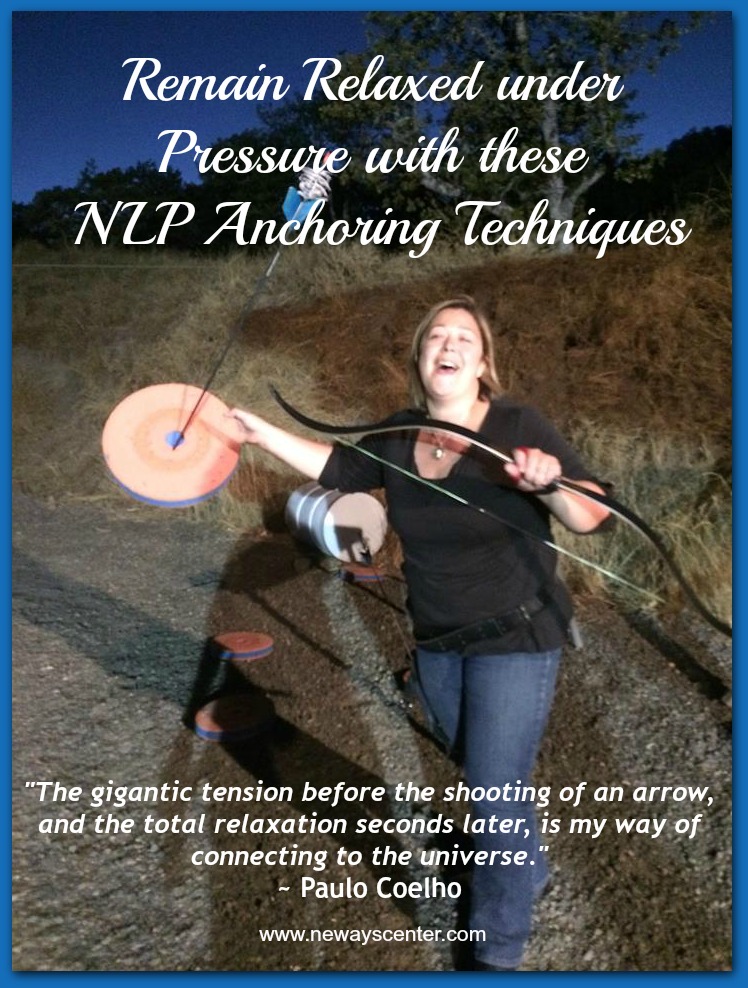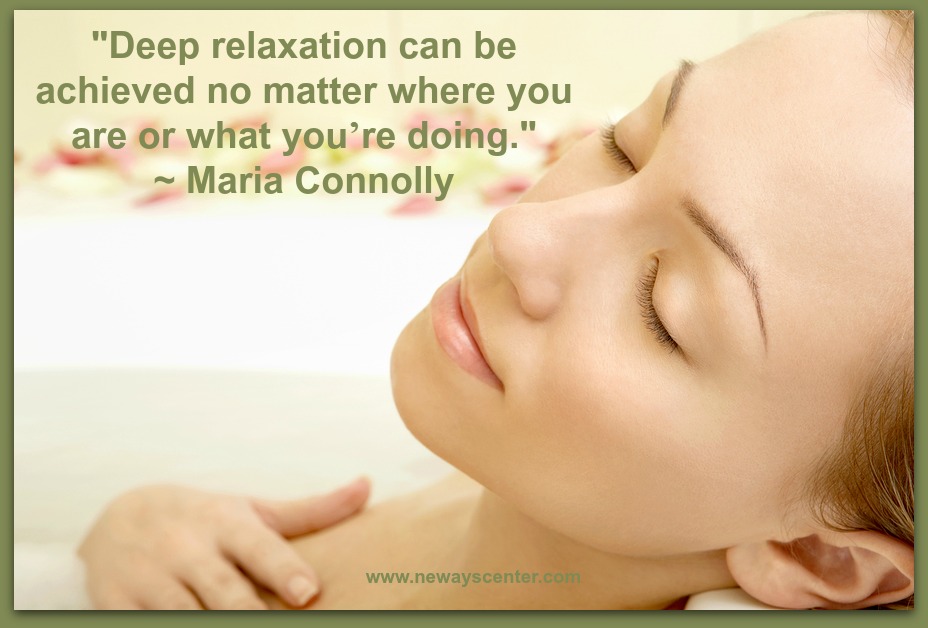Remain Relaxed Even Under Pressure with these NLP Anchoring Techniques
 Stressed out. Strung out. Uptight. On edge. Tense. Nervous. People have such a hard time achieving a deeply relaxed state of mind. Any little thing can set them off, send them over the edge. This is taking a terrible toll on the emotional, mental, physical, and spiritual health of us and our loved ones.
Stressed out. Strung out. Uptight. On edge. Tense. Nervous. People have such a hard time achieving a deeply relaxed state of mind. Any little thing can set them off, send them over the edge. This is taking a terrible toll on the emotional, mental, physical, and spiritual health of us and our loved ones.
Earlier, I shared a number of ways to achieve deep relaxation through Progressive Muscle Relaxation and simply making time for things you enjoy. (Yes, that’s me in the picture. I love archery!) As mentioned, to get the most benefit, focus on relaxation via the body, via the mind, and via the soul.
What do I mean by Deep Relaxation via the Soul?
A lot of people say that they can’t relax because their lives are chaotic and messy. It’s important to practice your ability to relax fully no matter the circumstances or the conditions around you. Neuro-Linguistic Programming (NLP) teaches us that we can choose any psychological state at will. This means that you can experience bliss, joy, gratitude, or love no matter what is happening in your life. And one of the NLP techniques that helps you do this is called “anchoring”.
In NLP, “anchoring” refers to the process of associating an internal response with some external or internal trigger so that the response may be quickly and subtly accessed.
NLP anchoring techniques are based on science. Russian scientist, Ivan Pavlov, famously demonstrated how conditioning works. He rang a bell every time dogs were fed. Soon the dogs psychologically associated the smell and taste of food with the sound of the bell. So even if the food was not present, the dogs would salivate at the sound. The bell (an external trigger) caused a real physiological response (salivation) even though the smell and taste were absent.
NLP anchoring techniques similarly cause you to psychologically associate a signal or trigger (tapping your chest, snapping a rubber band, squeezing your fingers) with a physiological response (an emotion, mood, or mental state) of your choice. When you experience a negative emotion, you can trigger a positive emotion and extinguish the negative one. This thereby allows you to choose your mood or state of mind no matter what the circumstances are.
Here are 7 Easy Steps to Anchoring a Resourceful State of Mind:
- Decide on the state you want to anchor. For example being calm and relaxed.
- Recall a memory or imagine a situation where you can experience the state. Make it very detailed and vivid, using all your senses.
- When the experience is vivid and you’re in the desired state, connect it with a part of your body. For example, put your hand on your heart when the state is at its peak!
- Now, break state by removing your hand and doing something else. Open your eyes, count down from 10 to break state and distract yourself.
- Apply the anchor by just placing your hand on your heart and check that the required state, such as calmness or peace, occurs again.
- You may need to repeat the anchoring process a number of times to make the experience sufficiently intense.
- Use your new anchor in the situation where you want to experience the desired state. For example, when you’re feeling stressed during your next business meeting, place your hand on your heart and make sure it creates a sufficiently robust resourced state of calmness.
NLP anchoring techniques are really a method of deep relaxation that is best learned under the guidance of a trained professional. If you’d like to add this excellent tool to your life skills, please contact me and I’d be happy to help you finally achieve the peace you crave.




